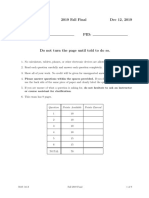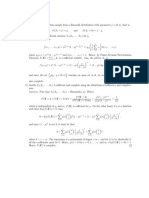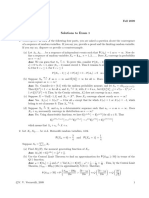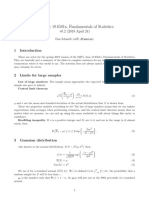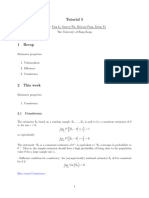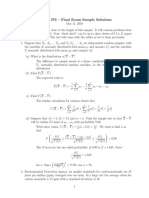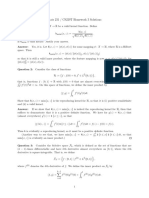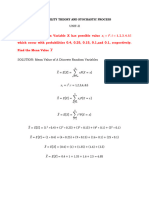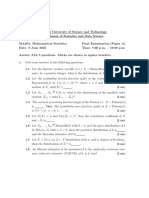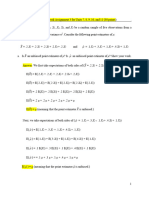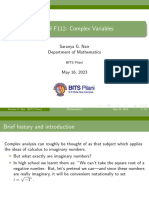0% found this document useful (0 votes)
10 views4 pagesRobustStats Practice Problems
The document presents a series of problems and solutions related to robust statistics, including the effects of adding a value to a dataset on standard deviation and median, properties of the exponential distribution, and variance estimations for mean and median. It also discusses the influence function of the Huber estimator, conditions for M-estimates, and properties of L-estimates. Additionally, it covers topics such as the breakdown points of statistical measures and the asymptotic behavior of trimmed means.
Uploaded by
vrishti.godhwaniCopyright
© © All Rights Reserved
We take content rights seriously. If you suspect this is your content, claim it here.
Available Formats
Download as PDF, TXT or read online on Scribd
0% found this document useful (0 votes)
10 views4 pagesRobustStats Practice Problems
The document presents a series of problems and solutions related to robust statistics, including the effects of adding a value to a dataset on standard deviation and median, properties of the exponential distribution, and variance estimations for mean and median. It also discusses the influence function of the Huber estimator, conditions for M-estimates, and properties of L-estimates. Additionally, it covers topics such as the breakdown points of statistical measures and the asymptotic behavior of trimmed means.
Uploaded by
vrishti.godhwaniCopyright
© © All Rights Reserved
We take content rights seriously. If you suspect this is your content, claim it here.
Available Formats
Download as PDF, TXT or read online on Scribd
/ 4

